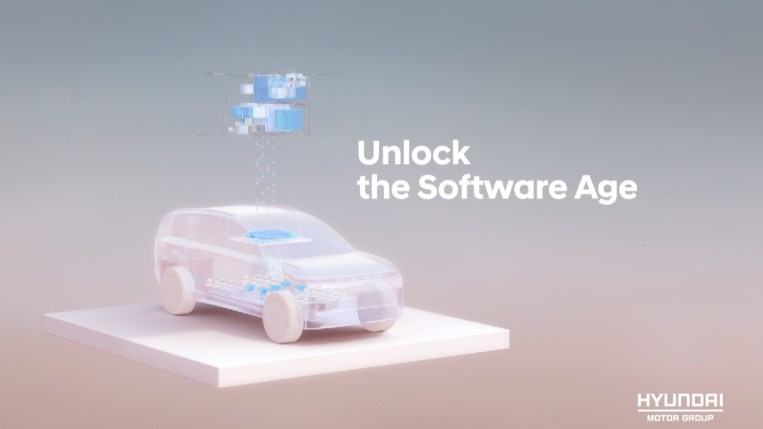
Hyundai Motor Group this week outlined its plans for “software-defined vehicles” in a presentation for reporters. The content won’t surprise you, but its implications are important to understand as you think about your next car.
The presentation returned over and over to two themes.
Same Parts in Many Vehicles
The first says that “platform standardization will cut costs and development time.”
This means that, though a dealership may contain everything from budget subcompact sedans to luxury 8-seat SUVs, they’ll use many common parts.
Electric car lineups let automakers design skateboard-like platforms of batteries, electric motors, and suspension and steering components that can be scaled up or down to build vehicles of many types. Engineers can make front-, rear-, and all-wheel-drive vehicles simply by placing electric motors on one or both axles.
Hyundai Motor Group owns the Hyundai, Kia, and Genesis brands, as well as several heavy vehicle brands for industrial use.
The company says it expects two electric platforms – one for passenger vehicles and one for commercial trucks – to make up most of its lineup after 2025.
Five years from now, the differences between a compact, affordable Kia Soul and a 3-row luxury Genesis GV80 could be more cosmetic than mechanical.
Pay-As-You-Go Features, Horsepower
The second says that “Over-The-Air (OTA) software updates for all models by 2025 will offer enhanced performance and functionality anytime, anywhere,” and often for a fee.
The company could build most features into most cars but not make them available to owners all the time. Instead, owners could lock and unlock them for a fee.
Related: A Monthly Fee For Car Features? It’s Coming
When Hyundai executives talk to business reporters, the idea sounds like this:
“Constantly upgradeable vehicle software will bolster Hyundai Motor Group’s ability to secure diverse and stable revenue streams by providing fresh vehicle features and functionality and leveraging selected data to offer personalized services for each customer.”
For car shoppers, that means paying for “vehicle features and functionality” after you take the car home. To be clear, Hyundai presented the idea this week. But similar discussions are happening at nearly every automaker as they ponder their future.
It’s Not Just Hyundai
Hyundai didn’t explain how it would structure the fees. Automakers have experimented with several approaches. BMW famously charged owners overseas a monthly fee for access to heated seats earlier this year. The idea went over poorly on social media but is unlikely to die.
Volkswagen, meanwhile, has discussed charging for some functions by the mile. The company announced a concept car last year, the Trinity, that would let owners rent additional horsepower and self-driving software by the mile.
Executives mused that they might be able to keep the cost of the self-driving software lower than a corresponding plane or train ticket and count on owners to use it for long trips.
Trade-Offs For Drivers
For drivers, there are arguably some advantages to the idea. They could adjust their car payment to match their financial circumstances over time by reducing and adding features and turning off unneeded functions as the weather changes. There could be no such thing as separate luxury and budget cars – just cars with the luxuries switched on or off this month.
But it would also put an end to the idea of ever paying off a car. Most of us don’t see that as a fair trade.
But automakers clearly do. Hyundai executives spoke often of the long-term revenue stream software-defined vehicles create, as it allows the company to continue taking payments on a car indefinitely many years after selling it. Even used car buyers could end up sending monthly payments to the company that built their car.







